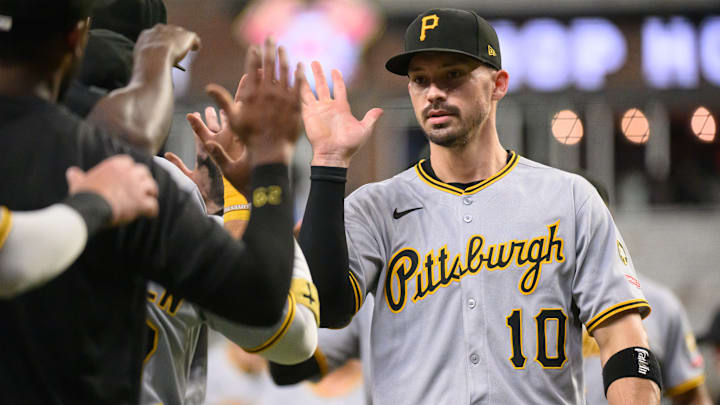The 2025 season saw Pirates outfielder Bryan Reynolds produce offensive numbers well below his career average, without obvious explanation. In 154 games, he slashed .245/.318/.402 for an OPS of .720. He finished with a career-high 38 doubles but also a career-low 16 home runs. He drew 57 walks – the same as in 2024 – and struck out a career-high 173 times.
However, as Jason Mackey of the Pittsburgh Post-Gazette pointed out recently, when actual stats don't match the expected, bad luck is often to blame.
"It’s OK to say Reynolds didn’t meet expectations in 2025 but also admit there’s no clear reason why," Mackey wrote. "Stuff happens. Baseball can be weird."
In other words, Reynolds’ 2025 downturn should be seen more as an aberration than a warning sign – a rare blip in an otherwise steady, high-floor career defined by consistency, durability and strong underlying metrics that still point to long-term success.
Since his breakout in 2019, Reynolds has been one of baseball’s most reliable switch-hitters. Even when the Pirates around him struggled, his production held firm. He regularly posted an OPS between .800 and .850, with balanced splits from both sides of the plate. Players with that kind of sustained performance history don’t suddenly lose it without a structural reason (such as a major injury, age regression or loss of bat speed). None of those apply here.
Reynolds is entering his age-30 season in 2026, which is typically still within a hitter’s prime. His 2025 numbers represented more of a “variance year” than a cliff.
Went through a bunch of numbers involving Bryan Reynolds. I've also covered his entire career. My opinion? Relax. This isn't some bigger, ominous trend.https://t.co/DpnralQTEB
— Jason Mackey (@JMackeyPG) October 26, 2025
Bryan Reynolds' underlying metrics in 2025 suggest bad luck, not skill loss
Statcast data also told a more encouraging story about Reynolds' 2025 campaign. His hard-hit rate, average exit velocity, and line-drive percentage stayed near career norms, even if the results didn’t show it. His BABIP dipped significantly from his career average, which is often a hallmark of simple misfortune rather than declining ability.
Reynolds wasn’t chasing more pitches or striking out more often, which would indicate signs of pressing or diminished pitch recognition. Instead, his biggest issue was timing and results on contact – the kind of slump that corrects itself with rhythm and reps.
Reynolds’ struggles were also magnified by the team context. The Pirates’ inconsistent lineup protection and lack of high-OBP hitters ahead of him often forced him to expand his zone or face more tough matchups with runners on base. In a deeper or more stable batting order, his offensive numbers would likely look more like his career averages.
Reynolds’ approach is still the kind that ages well, as his success has never depended on elite bat speed or freakish athleticism. His game is built on mechanical consistency, plate discipline and switch-hitting adaptability, all of which tend to age gracefully. Even if his power numbers fluctuate year to year, his on-base skills and gap-to-gap contact should sustain his value deep into his 30s.
Reynolds’ 2025 campaign fits the profile of many proven hitters who simply have a “down” season – something even stars like Freddie Freeman, Paul Goldschmidt, and José Ramírez have endured before bouncing right back. There’s no mechanical collapse, no obvious injury red flag and no sign of disengagement.
If anything, the Pirates should expect a motivated version of Reynolds in 2026, with regression working in his favor this time. His 2025 struggles look far more like an unlucky, timing-related off year than the start of a decline. His skillset, discipline and track record all point to a strong rebound – and possibly one of the quietest “comeback” seasons in MLB next year.
